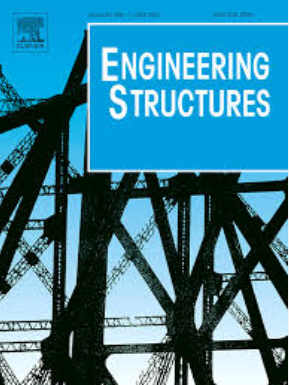A configuration design method for kirigami-inspired Miura thick panel origami with single degree of freedom
IF 5.6
1区 工程技术
Q1 ENGINEERING, CIVIL
引用次数: 0
Abstract
Origami is widely studied for its excellent folding and deployment properties. This paper investigated the configuration design method of Miura thick panel origami inspired by kirigami. Firstly, a kirigami-inspired single-vertex four-crease(kiri-SF) unit is proposed and the folding process of the kiri-SF thick panel is analyzed. Secondly, the double-vertex eight-crease single-cutting(DES) loop unit is designed through mirror transformation, and the foldability conditions are obtained. Thirdly, three units inspired by classic Miura and general Miura were designed and the topologically connect method including merge, coalesce and replace were proposed to realize the single degree of freedom(single-DOF) cell. Then, four single-DOF cells are connected in an over-constrained form which is return link to realize a single-DOF topo-configuration. Meanwhile, three topo-configuration mock-ups were conducted and the relationship between thick panel Miura origami configuration and zero-thickness Miura origami configuration is investigated. Finally, the D-H Matrix analysis method in spatial mechanism theory is used to verify the relationship between geometric parameters and kinematic parameters, and the finite element method(FEM) is used to simulate the folding motion. The results show that the FEM simulation is in agreement with the actual motion state of the three topo-configurations.
求助全文
约1分钟内获得全文
求助全文
来源期刊

Engineering Structures
工程技术-工程:土木
CiteScore
10.20
自引率
14.50%
发文量
1385
审稿时长
67 days
期刊介绍:
Engineering Structures provides a forum for a broad blend of scientific and technical papers to reflect the evolving needs of the structural engineering and structural mechanics communities. Particularly welcome are contributions dealing with applications of structural engineering and mechanics principles in all areas of technology. The journal aspires to a broad and integrated coverage of the effects of dynamic loadings and of the modelling techniques whereby the structural response to these loadings may be computed.
The scope of Engineering Structures encompasses, but is not restricted to, the following areas: infrastructure engineering; earthquake engineering; structure-fluid-soil interaction; wind engineering; fire engineering; blast engineering; structural reliability/stability; life assessment/integrity; structural health monitoring; multi-hazard engineering; structural dynamics; optimization; expert systems; experimental modelling; performance-based design; multiscale analysis; value engineering.
Topics of interest include: tall buildings; innovative structures; environmentally responsive structures; bridges; stadiums; commercial and public buildings; transmission towers; television and telecommunication masts; foldable structures; cooling towers; plates and shells; suspension structures; protective structures; smart structures; nuclear reactors; dams; pressure vessels; pipelines; tunnels.
Engineering Structures also publishes review articles, short communications and discussions, book reviews, and a diary on international events related to any aspect of structural engineering.
 求助内容:
求助内容: 应助结果提醒方式:
应助结果提醒方式:


